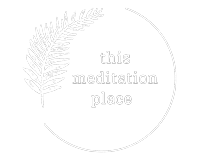A Beginner’s Guide to Meditation
Quick Summary
- Meditation is an ancient practise, which has gained in popularity due to its benefits in helping ease stress in the busy, modern world.
- Meditation can help you find inner peace, and live in a calmer, more content way.
- Guided meditations can be a fantastic way for beginners to start.
- Consistency is key when building a habit, even if you only practise for a few minutes a day.
Introduction
In the hustle and bustle of our modern lives, finding moments of peace and clarity can seem tricky at times. This is where meditation comes in – a years old practice that has been helping people find inner calm and focus for centuries. If you’re a beginner looking to start practising meditation, this guide is here to help you navigate the path towards a more centred, calm and mindful life.
Understanding Meditation
At its core, meditation is a practice that involves training the mind to achieve a state of heightened awareness and focus. Contrary to popular belief, meditation is not about emptying the mind of thoughts but rather observing them without attachment. It is a journey inward, a process of self-discovery and connection with the present moment. Personally, I also find meditation deepens my connection to myself, others and the earth.
Setting the Scene
Creating a relaxing environment can be really helpful when building a consistent meditation practice. Find a quiet space where you won’t be easily disturbed, and consider sitting on a comfortable cushion or chair, or even lying down. Dim the lights, perhaps light a candle or fairy lights, or use a spot which has its own natural light. Use aromatherapy or incense to promote calm, relaxation, grounding or uplift- whatever your intention may be. Use the same spot in your daily practice, if possible.
Posture and Breath
As you settle into your chosen space, adopt a comfortable yet alert posture. Sit with your spine straight and shoulders relaxed, allowing for unrestricted breathing. Close your eyes gently, or if you prefer, maintain a soft gaze on a fixed point in front of you whilst lowering your eyes. Focus on your breath – the natural rhythm of inhaling and exhaling. Pay attention to the sensation of each breath as it enters and leaves your body. The temperature of the air, and how the air fills as it enters your lungs, your chest and abdomen expanding on your inhale. If you find it more comfortable, you can lie down, however try to keep alert- instead of falling asleep!
Start Small
For beginners, the idea of sitting in meditation for an extended period may seem daunting. Begin with short sessions, maybe five to ten minutes, gradually increasing the duration as you become more comfortable. Consistency is key, so aim for a daily practice to experience the cumulative benefits of meditation. If even five minutes feels unachievable, just go for a couple of minutes. Before long, you will be wanting to meditate for longer and you will start to lose track of time!
Guided Meditations
If sitting in silence feels challenging, consider using guided meditations. There are many resources available offering guided sessions led by trained and certified meditation instructors. These guided practices often include gentle instructions, soothing music, and prompts to help you stay focused, making the experience more accessible for beginners. Or you can even try to attend a group or one-to-one face to face meditation class. It is finding what works best for you and your life. The good thing about guided meditations through a teacher, is you can access consistent support to help you build your practice.
Mindfulness Meditation
Although there are many ways in which to meditate, one of the most popular is mindful meditation. In this practice, the focus is on awareness of the present moment. Start by directing your attention to your breath, and if your mind wanders, gently bring it back to the breath without any judgement. This simple yet powerful exercise helps train the mind to be present and allows you to become an observer of your thoughts.
Be Kind to Yourself
Something many of us find difficult! It’s natural for the mind to wander during meditation, especially for beginners. Instead of becoming disheartened or frustrated, approach your wandering thoughts with kindness and without judgement. Thoughts entering your head is completely normal. Acknowledge your thoughts or distraction and gently guide your focus back to your breath or chosen point of concentration. Like any skill, meditation becomes easier with consistent practice and patience.

Conclusion
Meditation can be for anyone, regardless of age, gender, religion, race or culture. Embarking on the journey of meditation as a beginner is a beautiful and rewarding practice. The benefits extend beyond just meditation, benefitting many aspects of daily life, including reducing stress, improving focus, and providing an overall sense of well-being. As you explore and go inwards, remember that there’s no right or wrong way to meditate – find what works best for you, and let the transformative power of this ancient practice become a valuable part of your life.
FAQ’s
To keep updated on meditation, please join our newsletter below.

